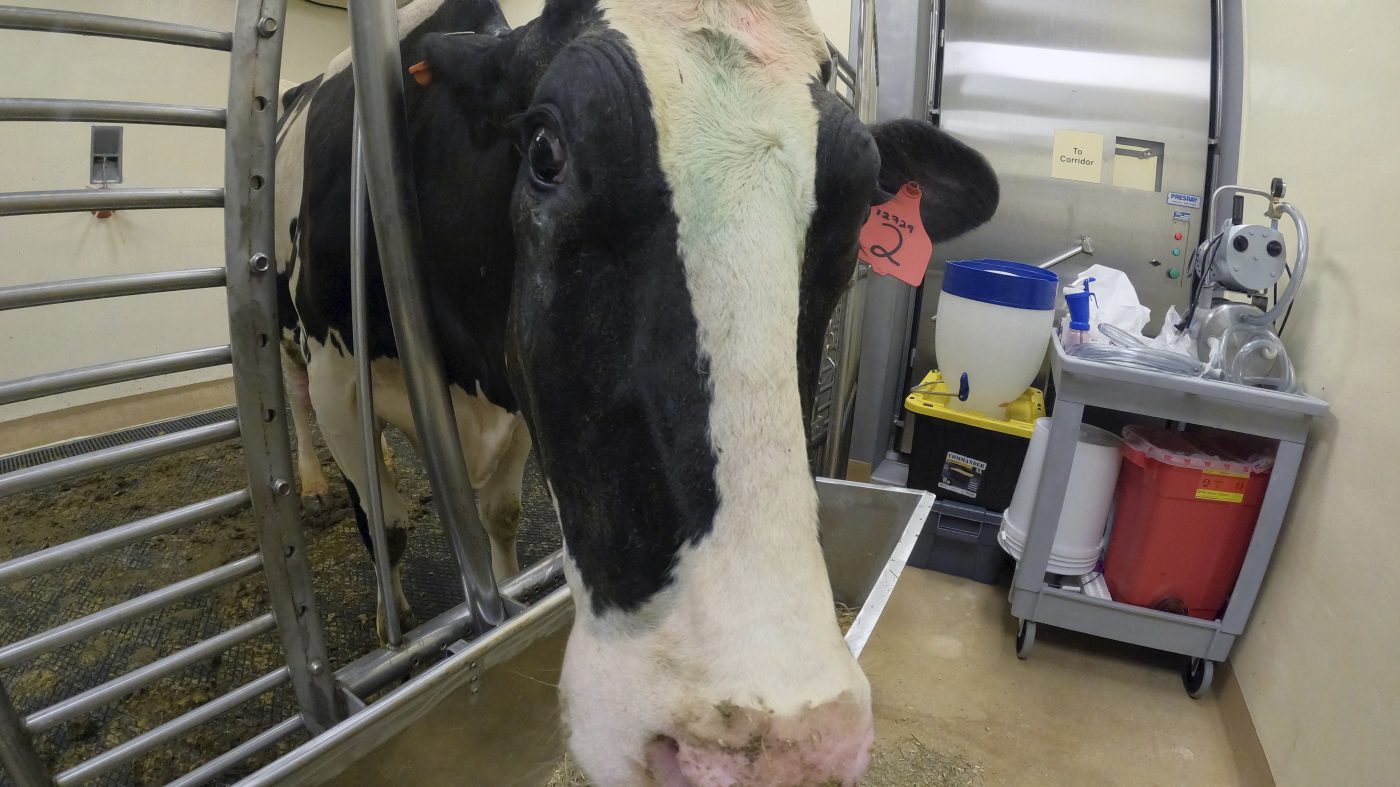
Photo of a Dairy Cow Post-Inoculation
In this image released by the U.S. Department of Agriculture, a lactating dairy cow is seen resting in its pen after receiving a vaccine against bird flu. The photo was taken at the National Animal Disease Center research facility in Ames, Iowa, on July 29, 2024.
Credit: U.S. Department of Agriculture/AP
New Insights on H5N1 Bird Flu Study
The Centers for Disease Control and Prevention (CDC) recently published its first research paper concerning the H5N1 bird flu outbreak during the Trump administration. The study was revealed on Thursday, presenting evidence that potential spillover infections from dairy cattle to humans may go unrecognized, particularly in regions where dairy herds have not been reported as positive.
This publication follows a communication freeze that previously delayed the agency’s Morbidity and Mortality Weekly Report (MMWR), a significant resource for public health updates. Reporting on different subjects resumed last week.
Emerging Concerns in Cattle Health
In the latest study, blood samples from 150 veterinarians who handled cattle nationwide were analyzed, revealing that three had antibodies related to the H5N1 virus, suggesting they had recent infections. Interestingly, none reported experiencing flu-like symptoms, nor did they tend to any cattle that were confirmed or suspected of having the virus. However, one veterinarian did work with infected birds.
Gregory Gray, an infectious disease epidemiologist at the University of Texas Medical Branch in Galveston, emphasized the challenges of identifying and controlling human infections, particularly when individuals do not actively seek medical assistance. He warns that if H5 viruses become more transmissible among humans, controlling the outbreak will become exceedingly difficult as the virus will likely spread swiftly and often without noticeable symptoms.
Historical data from the CDC indicated that about 7% of dairy workers exhibited signs of past infections, yet only half reported any symptoms. Moreover, research from Gray and colleagues in Texas suggests that numerous cases within the dairy industry remain undetected.
Lauren Sauer, a professor at the University of Nebraska Medical Center College of Public Health, expressed concern regarding the adequacy of surveillance, stating that the detection of asymptomatic or mild cases indicates that many infections are likely being overlooked.
Key Findings from the Study
Interestingly, one veterinarian involved in the study was based in Georgia and South Carolina, regions that had not reported any bird flu cases in cattle. It’s important to note that the data presented in the latest CDC study does not represent real-time conditions; the samples were collected in September, prior to the initiation of the national bulk milk testing program. The number of known human cases has since risen to nearly 70, underscoring the need for improved monitoring of cattle and dairy workers.
Recent Developments in Bird Flu
Just last week, a variant of the H5N1 virus, previously found in wild birds and poultry, was detected in dairy cattle for the first time. The long-term implications of this finding remain uncertain; however, it raises concerns about vaccination efforts for dairy cows and the potential for increased risks to human health. Ongoing research aims to determine whether this variant poses greater risks to humans, but that conclusion is still pending.
The recent delays in the publication of health reports during the Trump administration and the broader communication halt within the CDC have heightened apprehension among scientists and public health officials monitoring the H5N1 situation. At least one additional study regarding H5N1 transmission related to household cats is still awaiting publication in the MMWR.
Sauer cautions against underestimating the flu’s potential threats, highlighting that if human cases are occurring more frequently than detected, there’s a risk that critical mutations that facilitate easier human-to-human transmission could go unnoticed.
Monitoring human infections within the dairy industry has posed ongoing challenges throughout the bird flu outbreak. Health authorities have limited permissions to carry out disease surveillance on farms, and many workers are hesitant to undergo testing.
Despite the CDC’s recent study reporting a "low" number of past human infections, Gray pointed out that it remains unclear how many participants were genuinely exposed. "Regardless of how thorough our serological assessments are, we are likely to miss actual infections," he added, expressing that he isn’t surprised by the low prevalence noted in the study.









